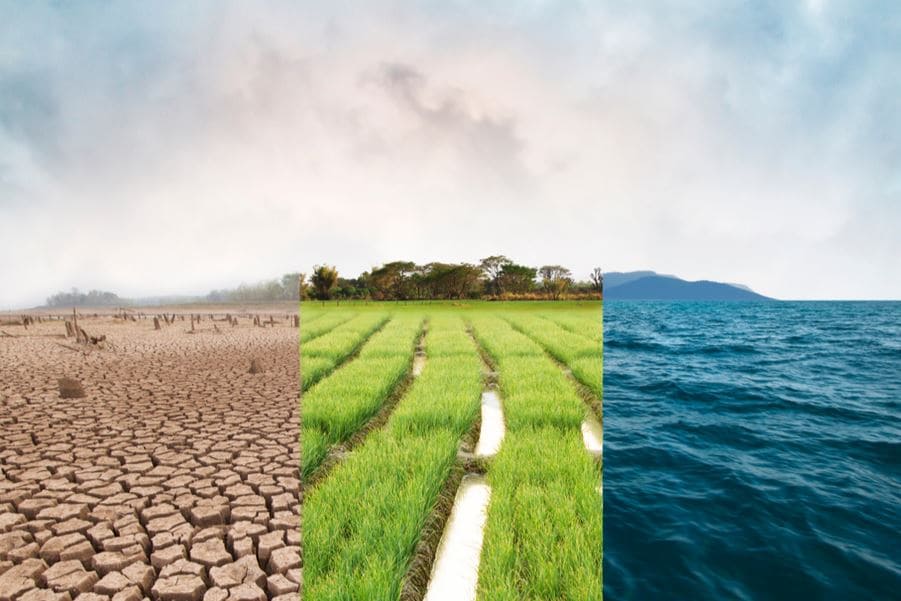Introduction
Climate change and its effects continue to pose a threat to global food security despite the measures taken to address this problem. The relationship between these two issues is complex since the climate crisis may affect the availability of food positively or negatively, while the overall outcome is adverse. To understand climate change and food security nexus, the impact of the former should be analyzed by considering its influence on the total amount of food produced from crop farming, livestock and poultry rearing, and fisheries.
Climate Change and Crop Production
Environmental issues, such as global warming, generally contribute to low farm produce, even though some crops may yield more under these circumstances. For example, food insecurity may happen due to extreme climate events, such as droughts, high temperatures, and floods (United States Environmental Protection Agency [EPA] 2022, para. 6). These conditions may destroy crops or cause retarded growth. Additionally, the climate crisis causes higher temperatures or other environmental issues that exacerbate the problem of weeds, pests, and diseases in crops (EPA 2022, para. 8). Consequently, low crop yields are experienced in many parts of the globe. In contrast, some researchers explain that global warming enhances crop production due to the high levels of carbon dioxide (EPA 2022, para. 5). However, this argument is not always true because there are other climate conditions that adversely impact farming. Therefore, analyzing both climate change and food security from this perspective points to the increasing risk of inadequate food production.

Livestock and Poultry Production
The decrease in livestock and poultry production in the face of the increasing climate crisis is a threat to food security. The possible adverse effects of climate change on farm output include a decline in the amount of milk, eggs, and meat produced (Cheng, McCarl & Fei 2022, p. 4). This problem contributes to food insecurity and may be caused by several issues, including extreme temperatures. Moreover, reproduction in livestock animals and poultry may decrease because heat stress leads to higher infertility rates (Cheng, McCarl & Fei 2022, p. 4). As a result, the number of animals or poultry available reduces. For these reasons, adverse climate conditions cause low farm output, leading to food insecurity.
Fishing Industry
Climate change adversely affects fish production and food security. This global crisis leads to several environmental concerns, such as the low pH of seawater and storms, which causes the destruction of coral reefs and other aquatic ecosystems (Barange et al. 2019, p. 615). Consequently, the availability of fish decreases since their reproduction may decline, and some species may move to areas that are less suitable for breeding. Furthermore, fish production from inland fisheries and aquaculture is negatively affected by extreme climate events or conditions, such as a rise in water temperature, floods, and irregular rainfall (Barange et al. 2019, p. 619). Noteworthy, food security may not be a serious problem since floods or high precipitation may increase fish production, but droughts and low rainfall lead to adverse effects. Hence, the changing climatic conditions affect fishing and food security today.
Conclusion
The production of crops, livestock, and fish can be analyzed to show the relationship between climate change and food security. Extreme climate events cause a lack of adequate food due to issues, like pests and damage to crops. Similarly, problems, such as heat stress, cause a decline in farm produce from livestock and poultry farming. In addition, the climate crisis may destroy the aquatic ecosystem or cause floods and other conditions that increase or lower fish production. Conclusively, climate crisis generally leads to global food insecurity.
Reference List
Barange, M, Bahri, T, Beveridge, MCM, Cochrane, KL, Funge-Smith, S & Poulain, F 2019, ‘Impacts of climate change on fisheries and aquaculture’, The United Nations, pp. 1-654. Available from: <https://www.fao.org/3/i9705en/i9705en.pdf>. [11 July 2023].
Cheng, M, McCarl, B & Fei, C 2022, ‘Climate change and livestock production: A literature review’, Atmosphere, vol. 13, no. 1, pp. 1–20, viewed 11 July 2023, DOI: 10.3390/atmos13010140.
United States Environmental Protection Agency (EPA) 2022, ‘Climate impacts on agriculture and food supply.’ Available from: <https://climatechange.chicago.gov/climate-impacts/climate-impacts-agriculture-and-food-supply>. [11 July 2023].


